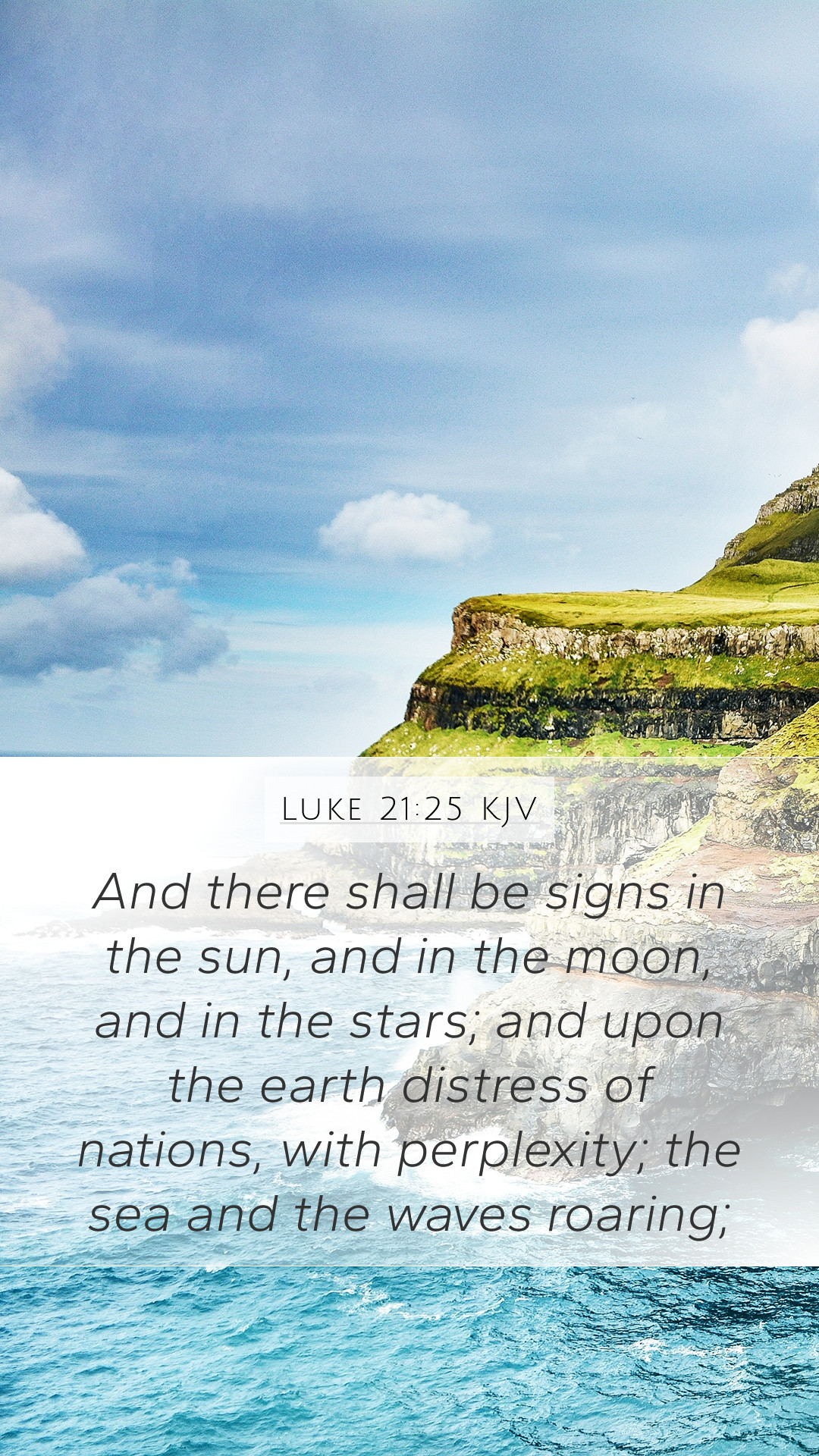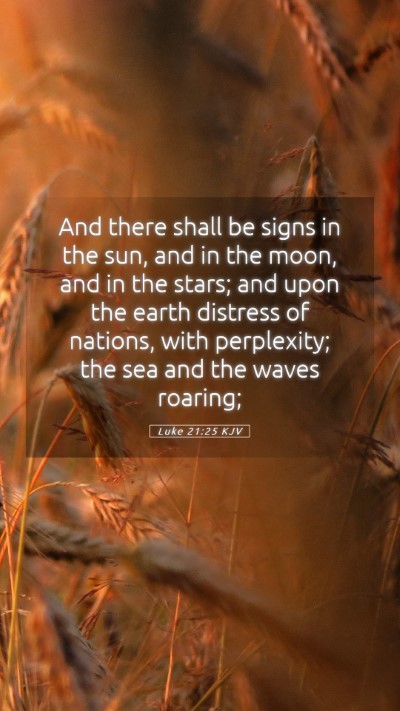Meaning of Luke 21:25 - A Comprehensive Bible Verse Commentary
In this exploration of Luke 21:25, we delve into the rich theological implications and interpretations of this scripture, providing insights from renowned public domain commentaries such as those by Matthew Henry, Albert Barnes, and Adam Clarke. This verse serves as a poignant reminder of the signs that precede the return of Christ and the ensuing cosmic upheaval.
Text of Luke 21:25
“And there shall be signs in the sun, and in the moon, and in the stars; and upon the earth distress of nations, with perplexity; the sea and the waves roaring;”
Verse Meaning and Interpretations
The verse indicates that extraordinary celestial phenomena will herald significant events on earth, particularly the return of Jesus Christ. Here we explore the views presented by various commentators:
-
Matthew Henry's Commentary:
Henry emphasizes that this verse reflects the divine signs that God will send as precursors to the final judgment. He notes that such portents are intended to prepare humanity for the coming of the Son of Man. The upheaval in celestial bodies symbolizes the instability and chaos that will accompany these supernatural events.
-
Albert Barnes' Notes:
Barnes aligns the cosmic signs with the end times, affirming that these signs will instill fear and awe in the hearts of individuals. The mention of “distress of nations” enhances the tension of the moment, as worldly concerns and fears will escalate, encapsulated by the imagery of roaring seas, metaphoric of chaos and unpredictability.
-
Adam Clarke's Commentary:
Clarke provides insight into the literal and metaphorical interpretations of the verse. He argues that the references to the sun, moon, and stars denote both the physical upheaval of nature and the spiritual turmoil in humanity. The 'Roaring of the sea and waves’ signifies not only actual meteorological events but the tumult in human affairs as society grapples with its impending fate.
Scripture Analysis
Through analysis, we recognize that this verse captures the intersection of natural phenomena and divine judgment. The significance of celestial occurrences serves to alert believers of the imminent return of Christ.
When studying this verse, it's essential to understand its context within Luke 21, where Jesus is discussing the signs of the end times and the importance of vigilance and readiness among His followers.
Historical Context
Understanding the historical backdrop is crucial for interpreting this verse. Jesus is speaking to His disciples about the destruction of the Temple and the interim period leading to His second coming. Many scholars suggest this passage draws upon Old Testament prophetic imagery (e.g., Isaiah 13:10 and Joel 2:30-31) to illustrate the cosmic signs associated with divine intervention in history.
Application and Relevance
For modern believers, Luke 21:25 serves as a compelling reminder of the ephemerality of the world and the certainty of Christ’s return. It encourages individuals to reflect on their spiritual readiness and the importance of steadfast faith amid societal chaos and personal fears.
Cross References
- Matthew 24:29-31 - Discusses the cosmic signs at the end of age.
- Revelation 6:12-14 - Prophesies about cosmic disturbances as the end approaches.
- Isaiah 13:10 - Describes the darkening of celestial bodies in a judgment context.
Conclusion
In summary, Luke 21:25 is rich with meaning and significance, reminding us of the prophetic warnings and the hope of Christ's return. The imagery of cosmic signs and earthly distress illustrates the tumultuous nature of the end times, encouraging believers to maintain their faith and readiness as they observe the world around them.
Whether in bible study groups or during online Bible study, this verse invites deeper discussions about the meaning of scripture and how its truths can be applied in daily life.


